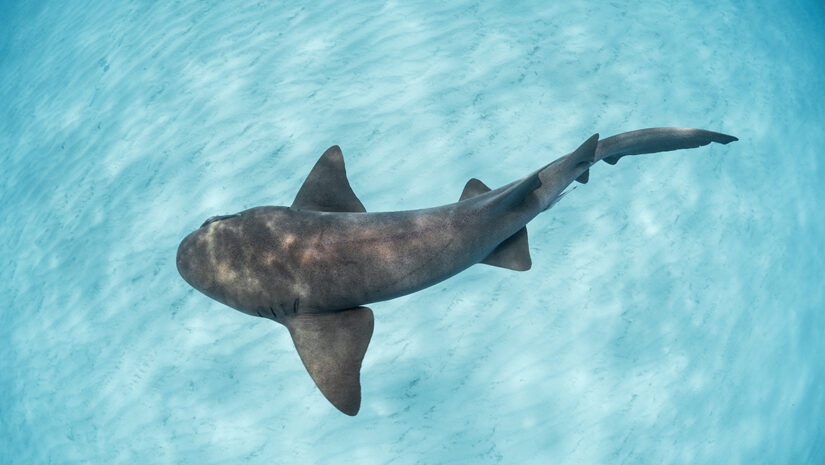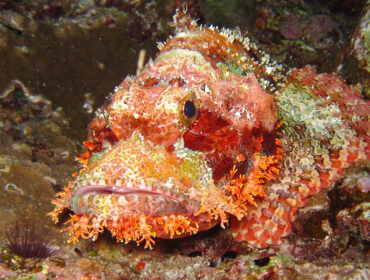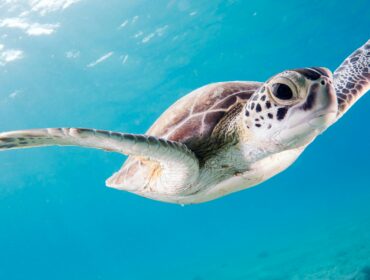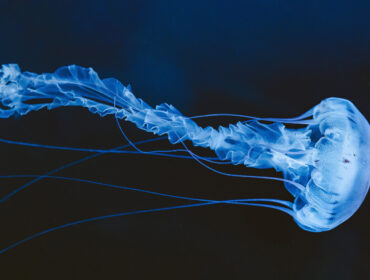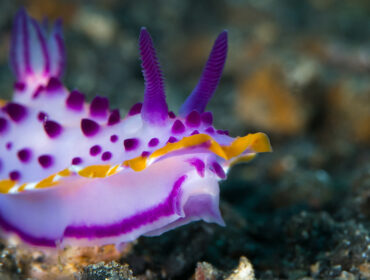Docile sharks are found in all the world’s oceans. While most consider sharks to be ferocious based on size and teeth, many sharks globally are considered harmless or non-threatening to humans. Many of these species are nocturnal, preferring solitude away from the public eye during the day, although some congregate in groups. Although these five types of docile sharks pose little threat to humans, in no way should any of these species be harassed, teased, or otherwise bothered. Respect for marine life and habitat should always be a diver’s priority!
Wobbegong
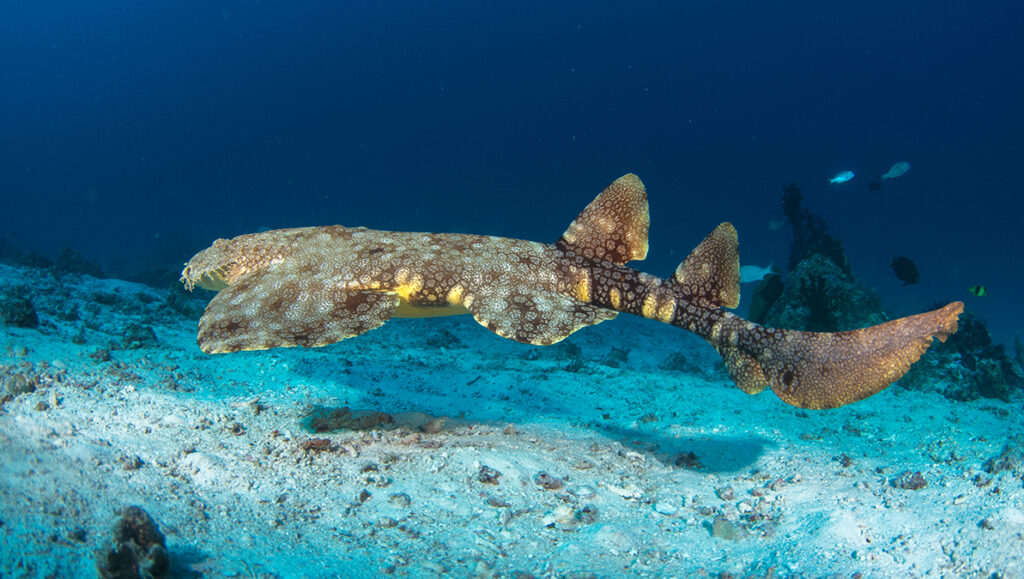
The wobbegong is a bottom-dwelling member of the carpet shark family, found on coral reefs of coastal estuaries of the western Pacific and eastern Indian Oceans. This species is an ambush predator, feeding at night on various prey fish, which is facilitated by their excellent camouflage that perfectly mimics the seafloor. This also leaves them vulnerable to being trampled by divers, and although they are not an aggressive species, wobbegongs will attack if provoked or agitated.
Horn Shark
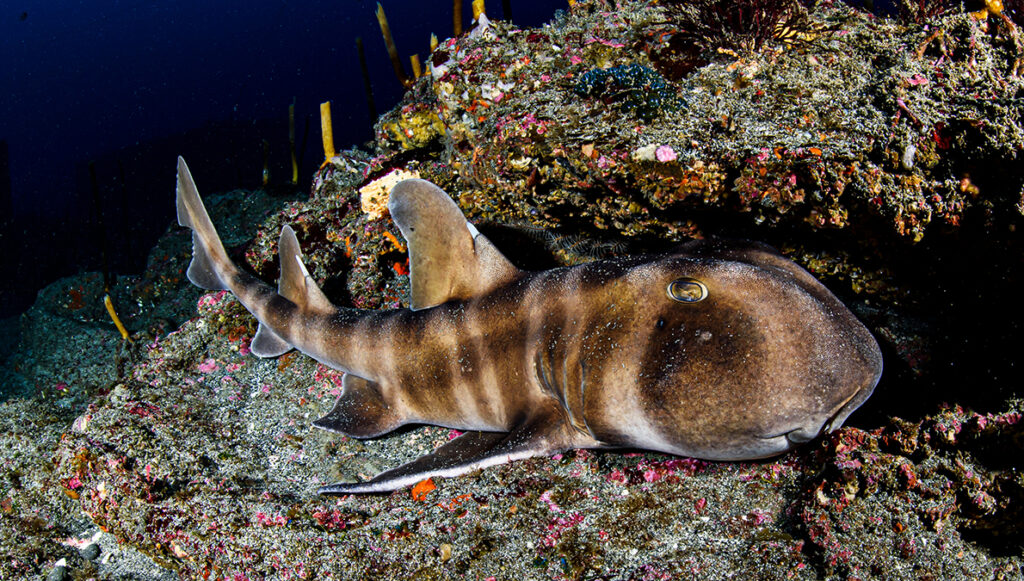
The horn shark is another type of docile shark found living in the coastal zones of the west coast of North America, from the Gulf of California (Sea of Cortez) throughout Californian waters. Like many sharks, this species is a nocturnal hunter, feeding on mollusks, crustaceans, and echinoderms, crushing their shells deftly with powerful jaws full of molar-like teeth. The horn shark is not a great swimmer but uses its pectoral fins to lumber awkwardly along the seafloor.
Nurse Shark
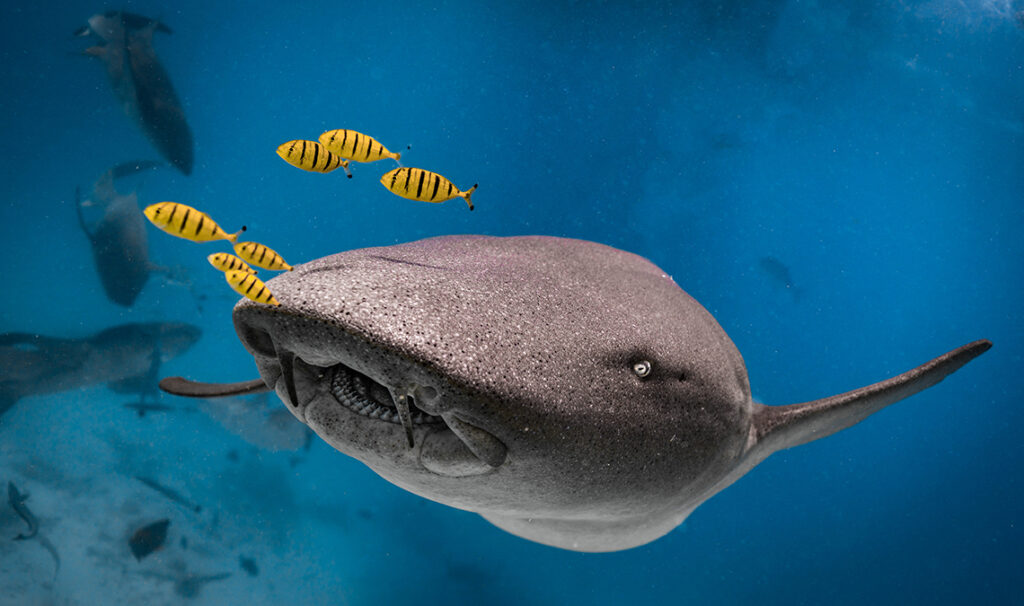
The nurse shark is perhaps the most commonly observed type of docile shark in the tropical and subtropical waters of the eastern and western Atlantic, Caribbean, and western Pacific. This species can measure up to 10 feet in length, but despite their size, they prefer to be left alone, huddling under crags, rocks, and stony reefs. They are opportunistic nocturnal hunters, feeding on various marine life, like fish and invertebrates they find in or near the substrate. They are obligate suction feeders, sucking in mouthfuls of the substrate and spitting out what isn’t edible. Scientists have recorded nurse sharks as having the highest suction forces of any aquatic vertebrate.
Angel Shark
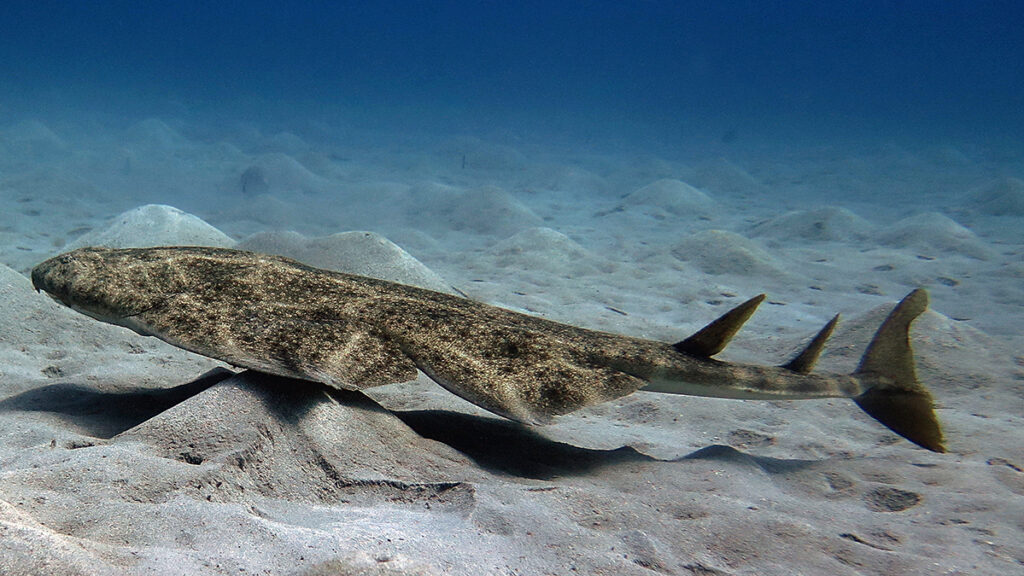
The angel shark resembles a mix of a shark and a ray, with a flattened, diamond-shaped body and a long, muscular tail. These docile sharks dwell on the seafloor, using their extensible jaws to grab anything hovering near them, including fish, crustaceans, and mollusks. Due to overzealous marketing of the angel shark by commercial fisheries, an annual take of over 90,000 sharks caused a severe population decline. The fishery is now carefully regulated.
Whale Shark
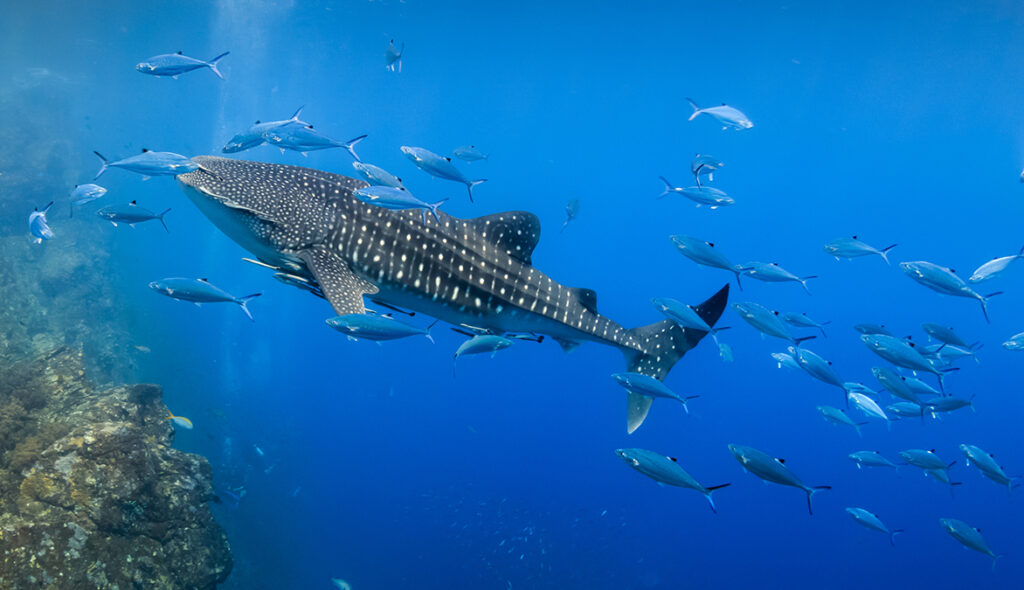
Whale sharks are an evident and beloved entry on our list of docile sharks, as they are harmless and display curiosity about and even kinship with humans. Whale sharks are a pelagic species found in all the world’s subtropical and tropical waters, gathering in large numbers when upwellings produce an abundance of their primary food source: plankton. Science has yet to observe the mating rituals or birthing of whale sharks.

